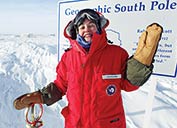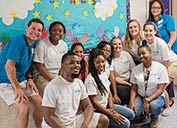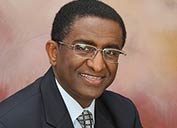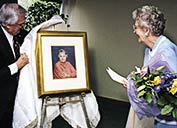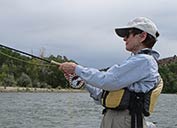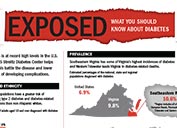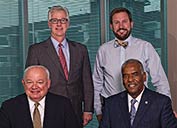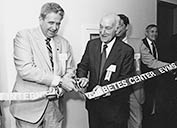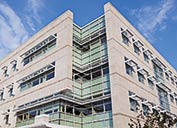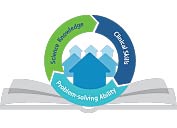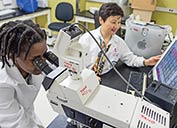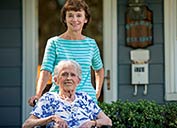Service Learning
On a recent Thursday evening, new patients fill the waiting room at the EVMS HOPES Clinic — the state’s first student-run free clinic. An EVMS MD student asks the first patient, “Como puedo ayudarte?” The conversation continues in Spanish, because tonight the clinic is operating under a different name: La Clinica Comunitaria Esperanza.
It is the inaugural Spanish-speaking HOPES Clinic offered by EVMS as part of the Service Learning program.
Working in the HOPES Clinic or being certified in medical Spanish are just two of the 12 Service Learning initiatives students can choose from as part of their degrees. They fall under five areas of need in eastern Virginia: first response; nutrition and exercise; underserved and health inequities; elderly and chronically ill; and infectious disease.
“It is our desire to develop extraordinary community-oriented physicians, and we see service learning as a key part of that development process,” says Ronald Flenner, MD (MD ’89), the James E. Etheridge Jr. Distinguished Professor, Vice Dean for Academic Affairs and Professor of Internal Medicine. “It strengthens foundational science knowledge, clinical skills and problem-solving abilities in the context of real-world experience.”
In addition to the benefits for students, making a difference in the community is a guiding principle of the EVMS vision. “Clinica Esperanza was designed to combine two areas of need to better serve the community,” says Don Robison, PhD, Director of Service Learning and Assistant Professor of Family and Community Medicine. “We hope to continue to combine projects like these and make a greater impact.”
One Clinica Esperanza patient told Brian Colchao, MD Class of 2019, that he was surprised to find so many Spanish speakers in one clinic, and because of that, he felt confident in the care he was receiving. “He reminded me how much of a difference it makes in the patient experience when the physician is able to connect on a social, cultural and linguistic level,” Mr. Colchao says. The patient’s words left a lasting impression. Mr. Colchao says this experience will inform the way he practices medicine.

The real-world context of service learning helps students integrate their foundational science knowledge and clinical skills with problem-solving abilities. Students follow one of five pathways. Each with a specific set of activities:


